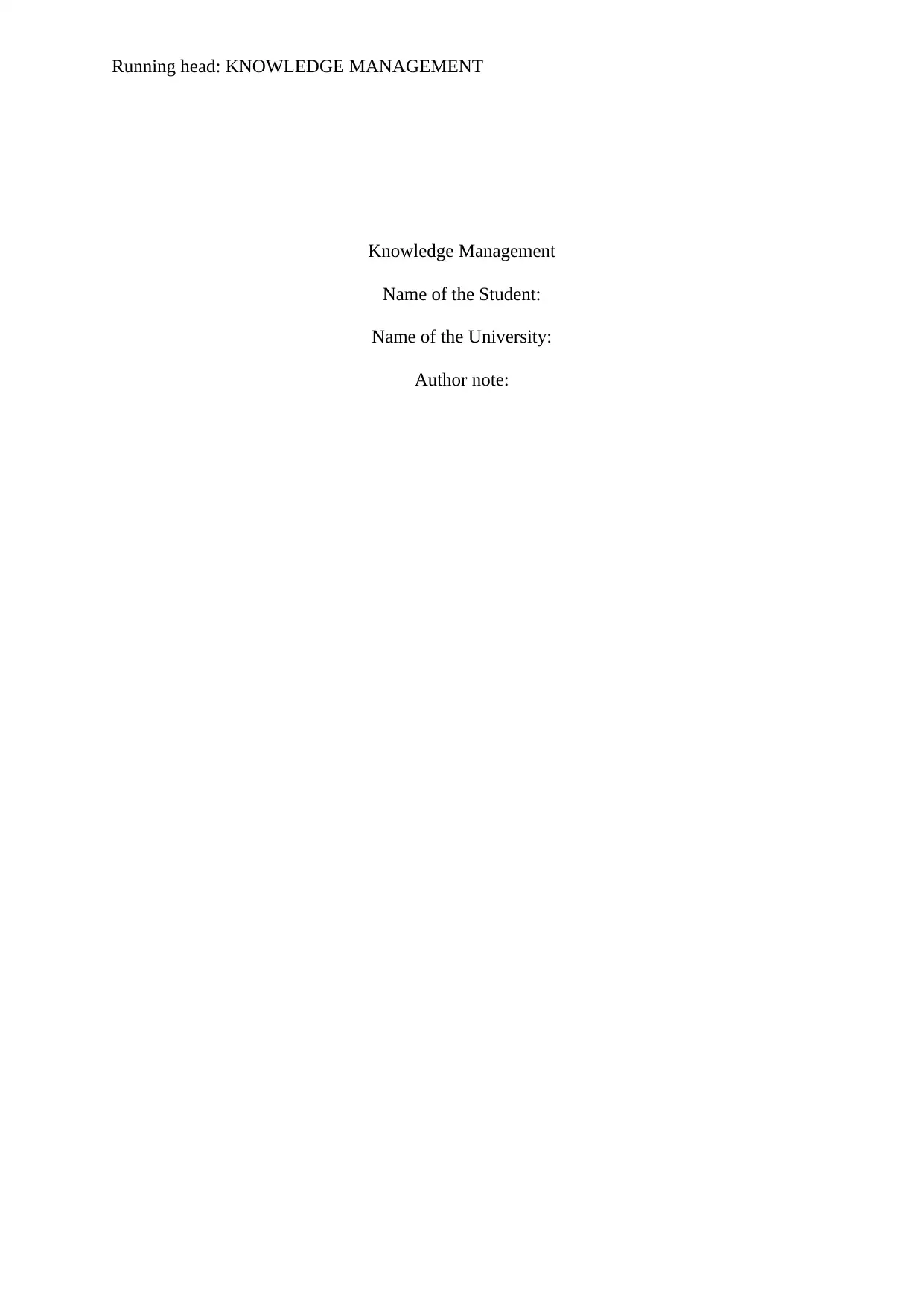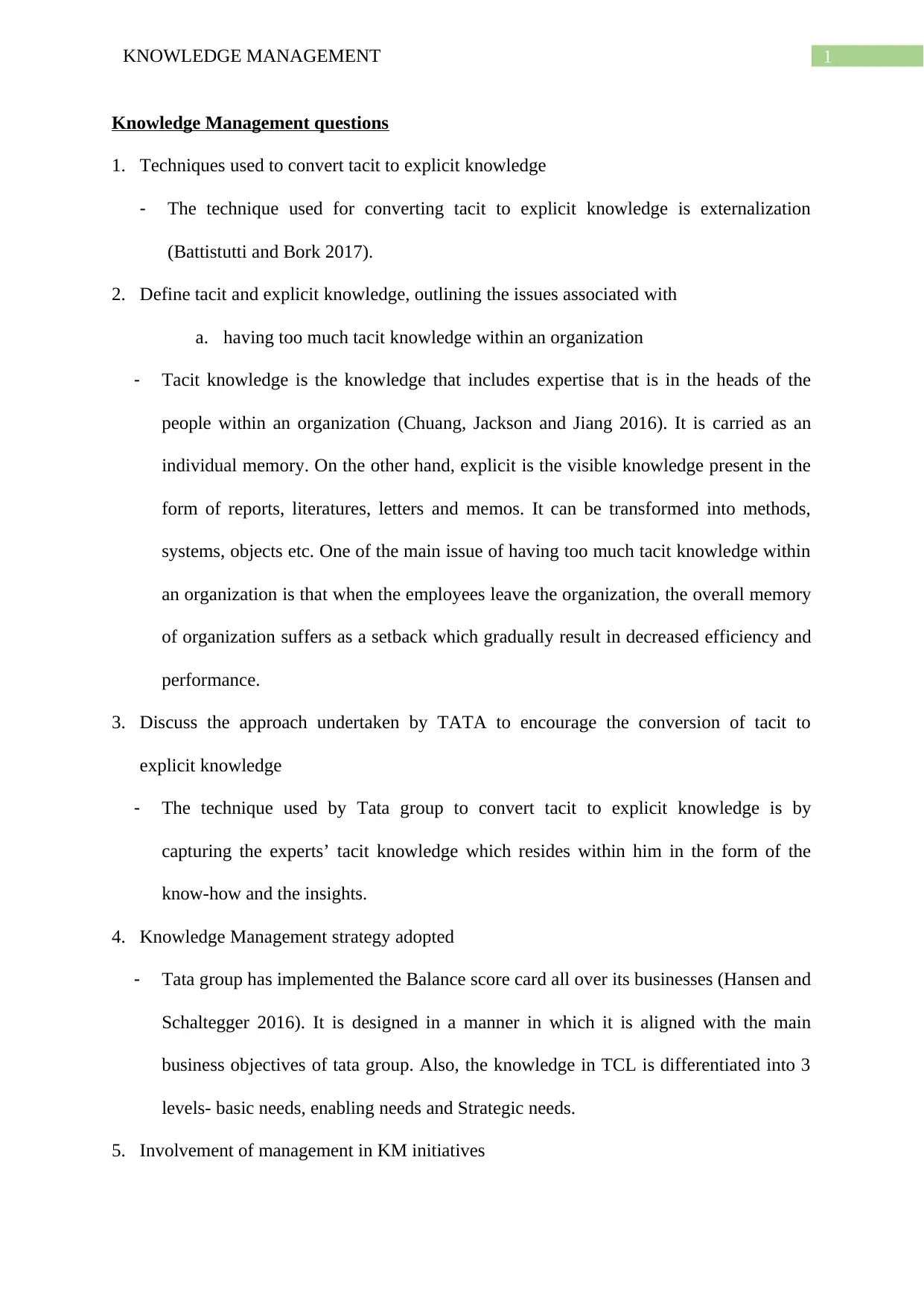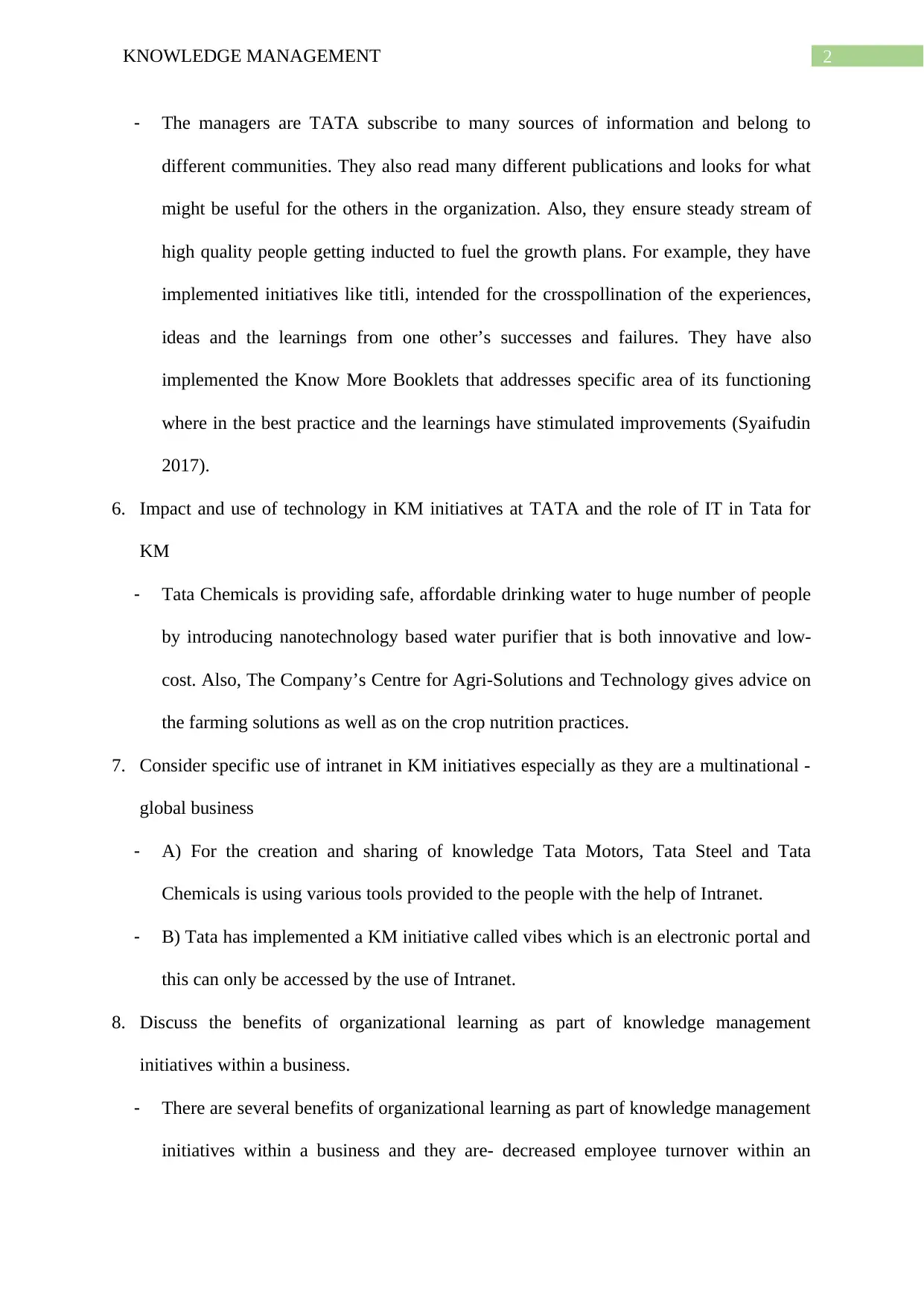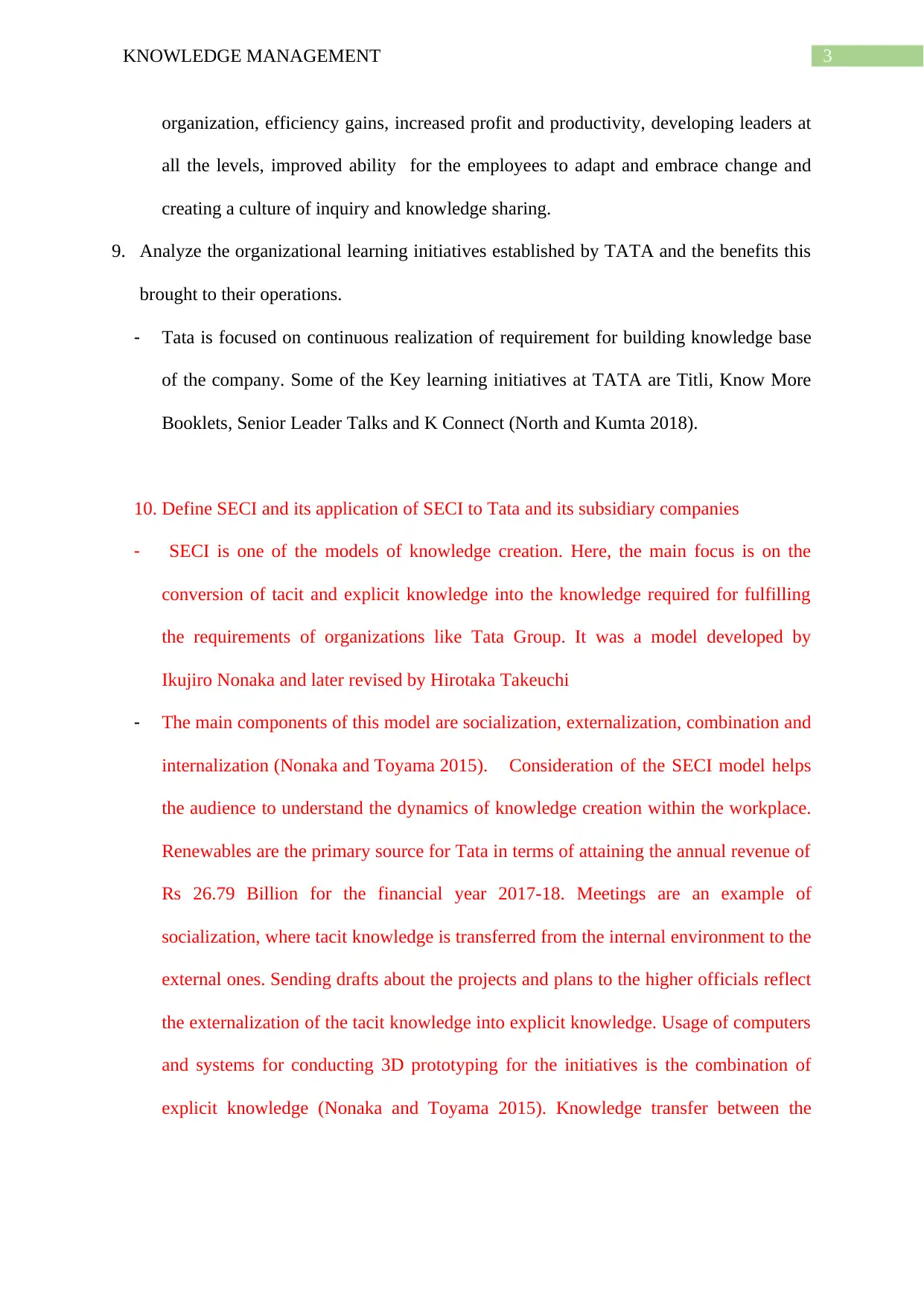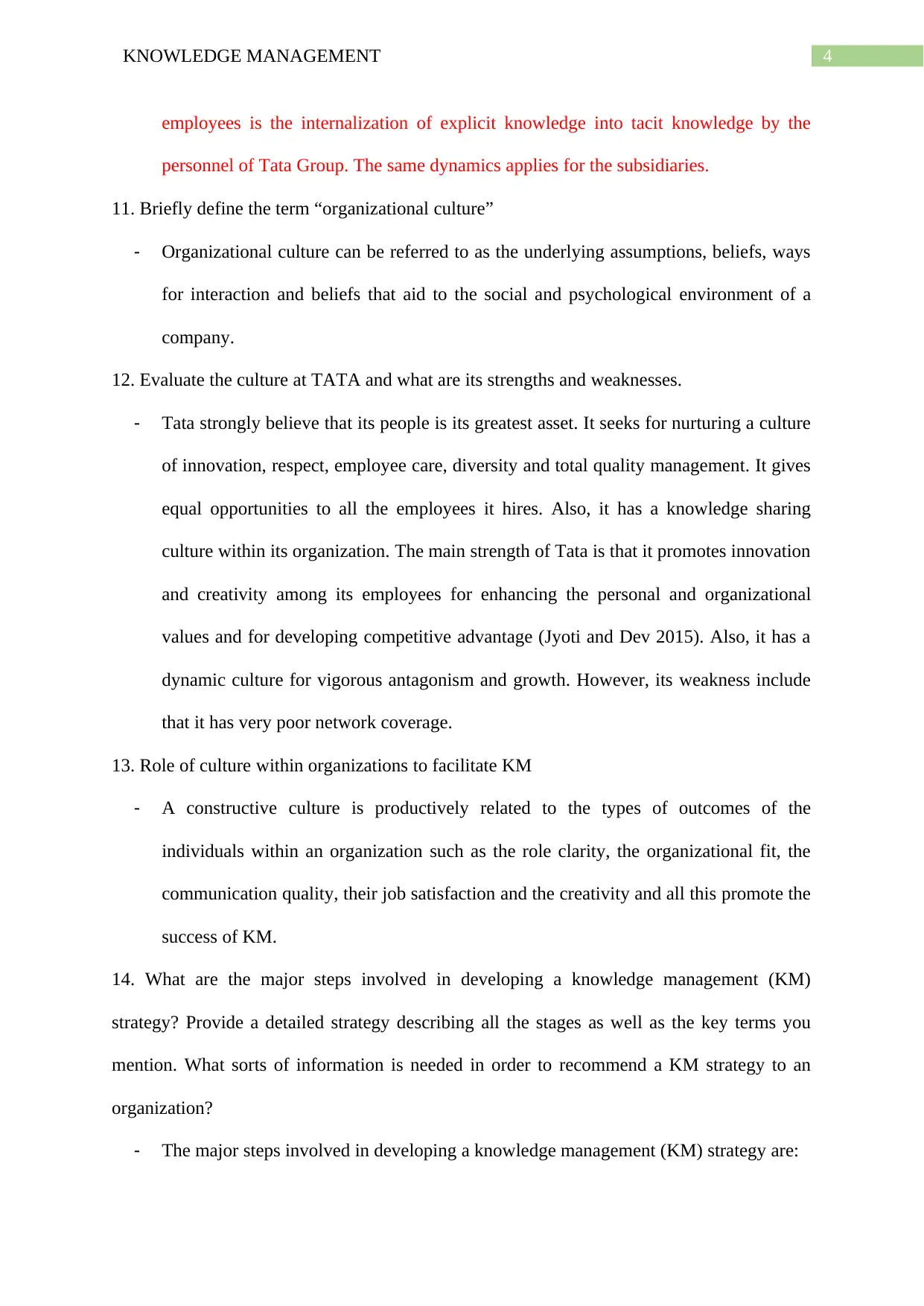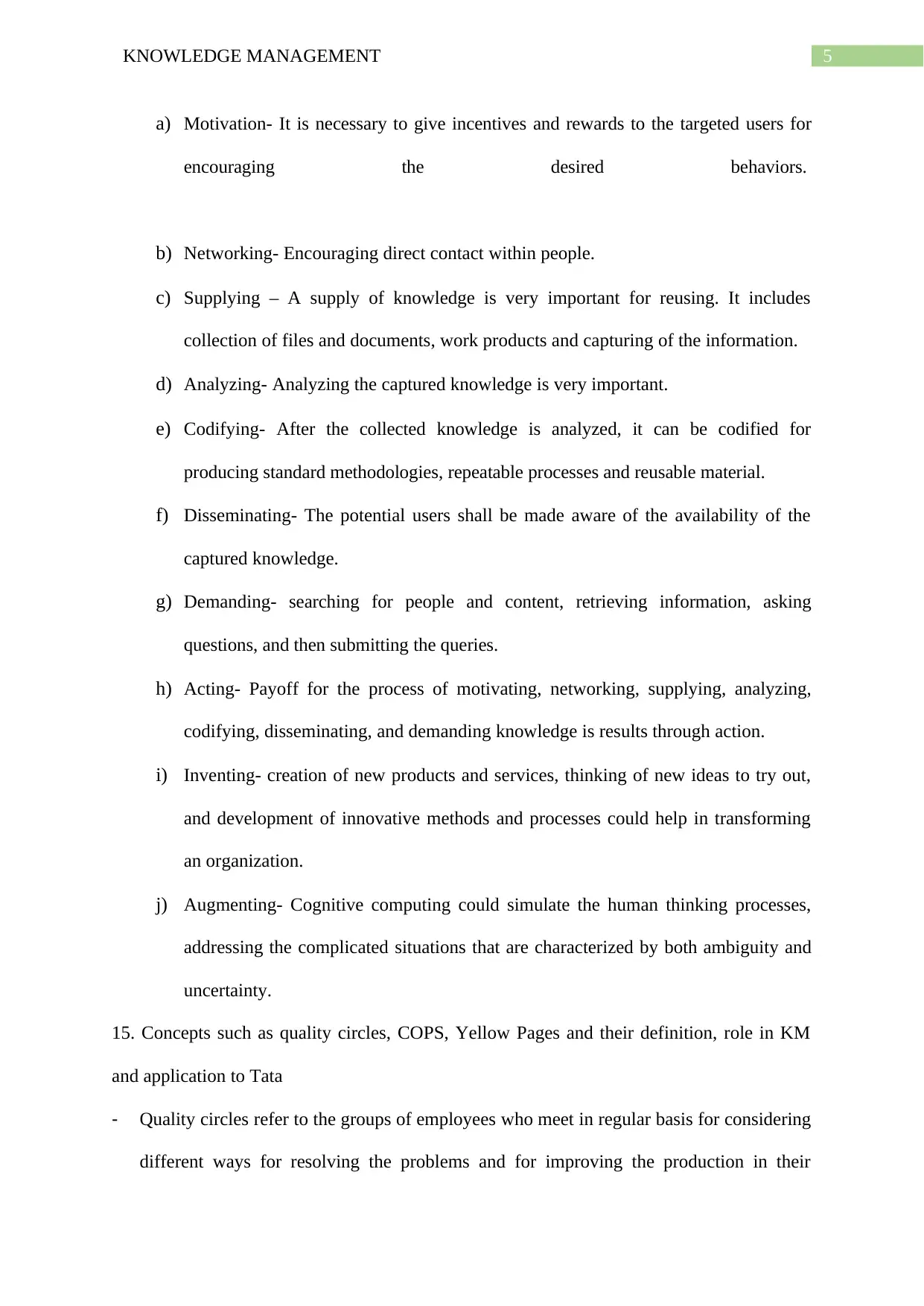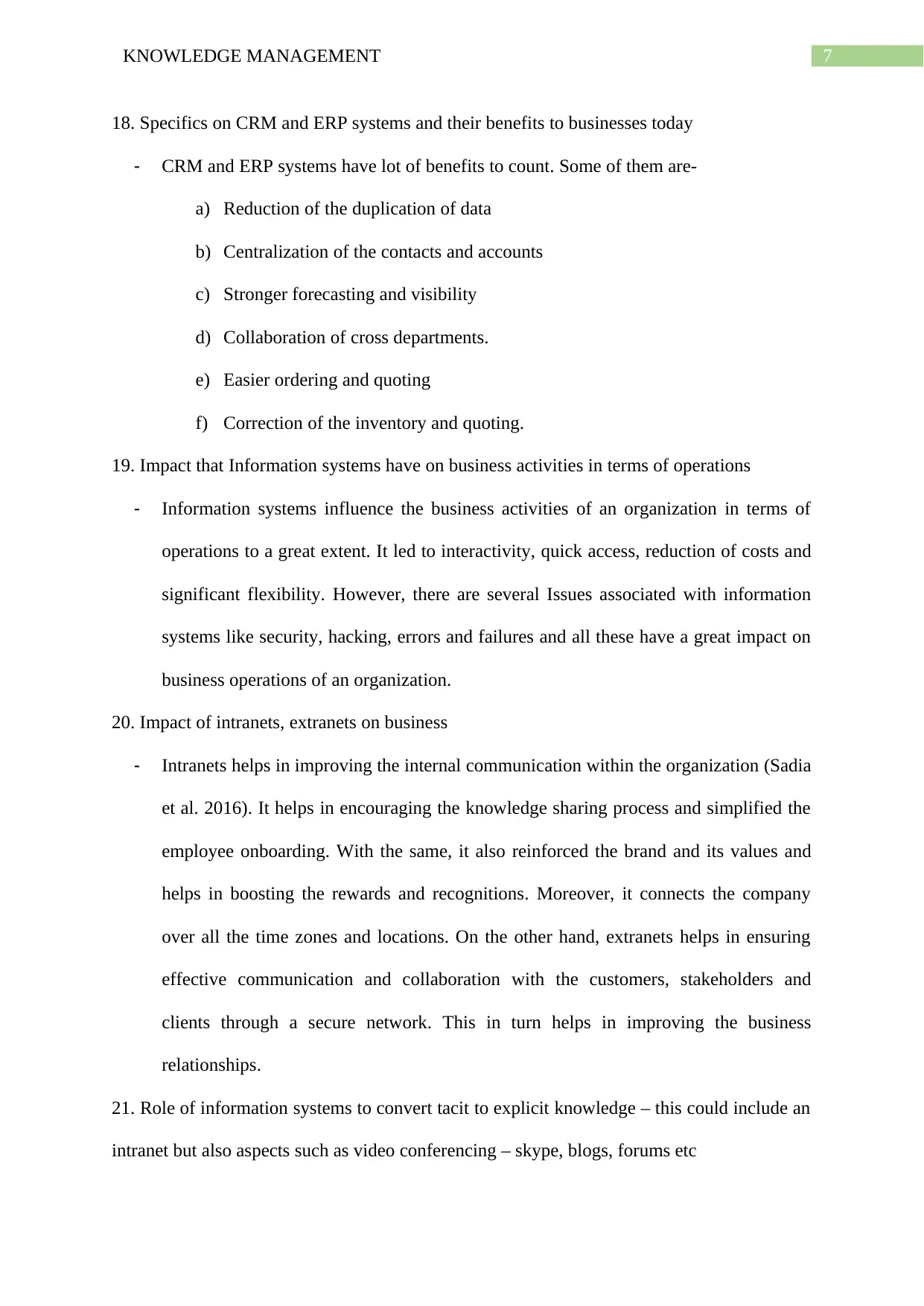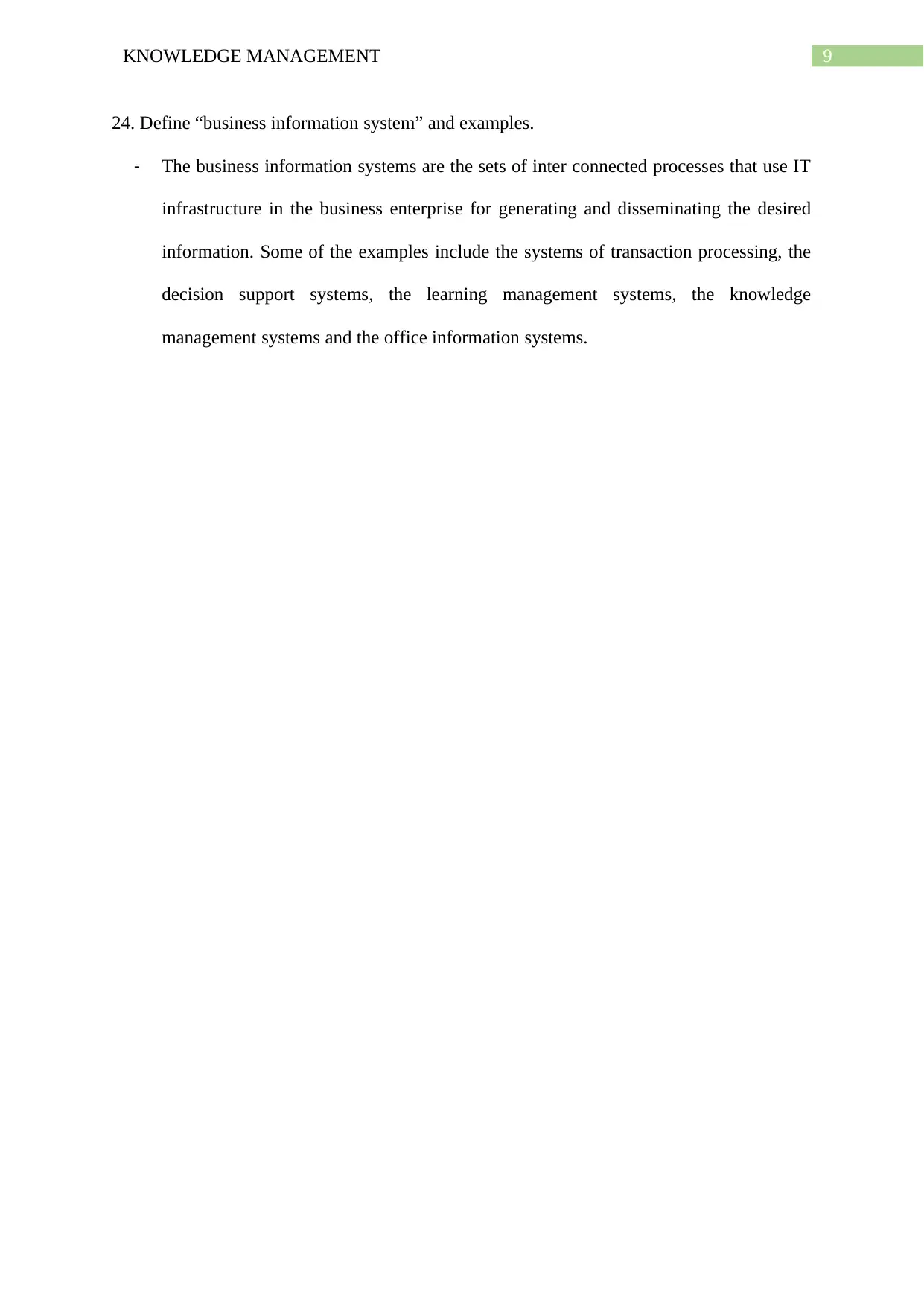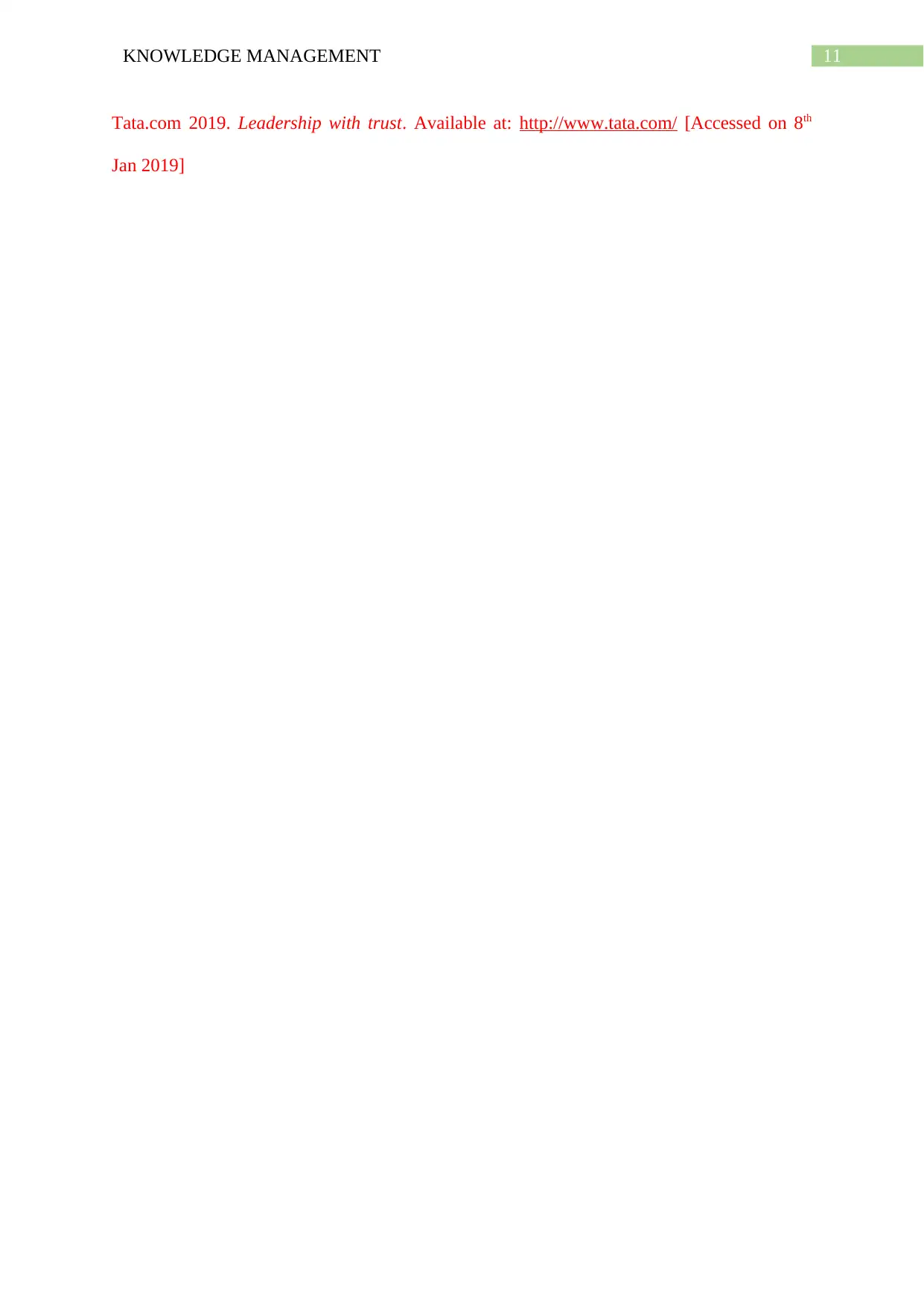This document discusses the concept of knowledge management and its strategies. It explores the techniques used to convert tacit to explicit knowledge and the issues associated with having too much tacit knowledge within an organization. The document also discusses the approach undertaken by TATA to encourage the conversion of tacit to explicit knowledge and the knowledge management strategy adopted by the company. It further examines the involvement of management in KM initiatives and the impact and use of technology in KM initiatives at TATA. The document also considers the specific use of intranet in KM initiatives, the benefits of organizational learning, and the organizational learning initiatives established by TATA. Additionally, it defines SECI and its application to TATA and its subsidiary companies. The document evaluates the culture at TATA, its strengths and weaknesses, and the role of culture within organizations to facilitate KM. It also discusses the major steps involved in developing a KM strategy and the role of information systems in KM. Finally, it examines the impact of information systems on business activities, the role of intranets and extranets in business, and the role of information systems in converting tacit to explicit knowledge.
![[object Object]](/_next/static/media/star-bottom.7253800d.svg)
![[object Object]](/_next/static/media/star-bottom.7253800d.svg)
